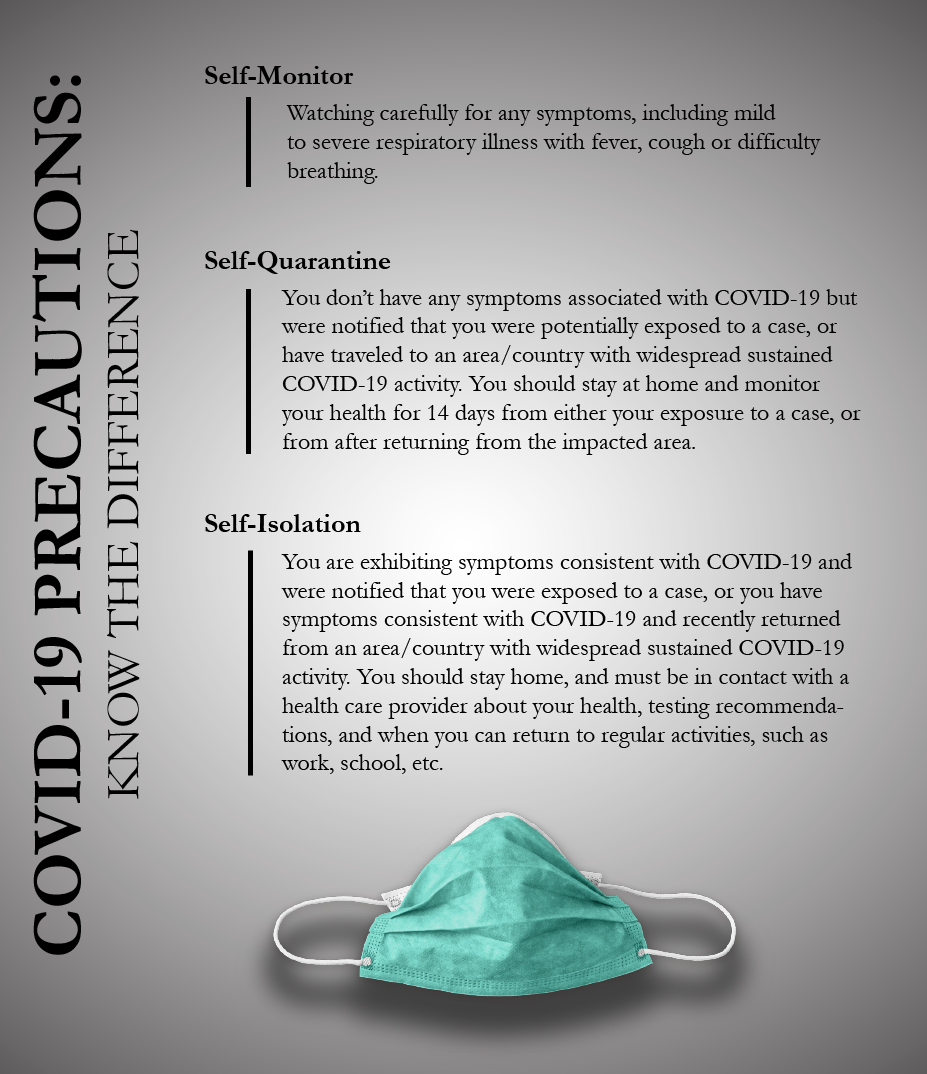
A graphic outlining the differences between COVID-19 precautions. St. Thomas students studying abroad in Rome were sent home by the university and placed in a two-week self-quarantine. (Reid Neeser/TommieMedia)
After being sent home from the Rome Bernardi campus March 6, St. Thomas sophomore Julia Lindell was told, along with 47 other St. Thomas students, to not be on campus. This is a part of the 14-day quarantine and self-monitoring period Bernardi returners are required to follow.
The Bernardi campus, along with its Catholic Studies and St. John Vianney programs, closed March 6, following an outbreak of COVID-19 in Italy. At the time they were sent home, there were no known cases of COVID-19 in Rome.
“The university has said, ‘Don’t go on campus for 14 days,’” Lindell said. “Out of precaution, most of us have been staying at home and not going in public at all.”
Lindell’s roommates and boyfriend get food and other necessary things for her so she doesn’t have to go out.
“Some of the other people … their families have just been going to the store,” she said. “Those who aren’t with their families and are themselves, they have risked it, but they’ve been very careful.”
Despite social distancing becoming a part of the general public’s vocabulary, Lindell has gone out with other quarantined friends during this period.
“There was a few of us who got together … and went to a regional park in Eagan, just to hang out and talk about what it’s been like being in quarantine,” she said. “We stayed well away from everyone else who was there.”
Lindell emphasizes that she goes out “no more than necessary.”
“There’s been a few people who had to go to the grocery store because they didn’t have food when they got home,” she said. “We wouldn’t go out to hang out with people.”
Lindell is self-quarantining in a St. Paul, Minnesota, apartment with her roommates. Her roommates weren’t part of the program, but they are taking steps to prevent the spread.
“We are regularly wiping down all of the surfaces in our apartment and have taken steps to separate my stuff from theirs,” Lindell said.
She is quarantining in St. Paul because of her mom.
“She’s an exercise instructor for elderly people, so we don’t want to risk her possibly contracting it,” she said.
One of Lindell’s friends on the Catholic Studies trip did take a test for the coronavirus after getting sick, according to Lindell, but it came back negative. Lindell has not exhibited any symptoms since returning.
“We think that we’re all probably negative for coronavirus considering that test,” Lindell said. “We spent most of all of our time together, so it’s unlikely that one of us would have contracted it when everyone else hasn’t.”
Student Affairs sent an email to all St. Thomas students explaining the difference between self-monitor, self-quarantine and self-isolation.
The email states: “Out of an abundance of caution, all St. Thomas community members returning from a country with a (Centers for Disease Control and Prevention) Warning Level 3 must self-quarantine for a period of 14 days before returning to campus,” which is in line with CDC recommendations. Italy is Warning Level 3, along with China, South Korea and Iran.
She, along with the other students in the Rome programs, were offered $800 from the university to accommodate flight changes back to the United States, along with on-campus housing and the Block 135 meal plan at no extra charge.
Now that classes have moved online for St. Thomas students, she will be moving back home during Spring Break and will be staying at home until the summer, when she hopes she will be able to take a summer engineering class on campus.
“I need to stay on track for my major and engineering classes do not work very well online,” Lindell said.
Lindell has made the best of her time in quarantine.
“We’ve been able to take this time in quarantine as a time for prayer and reflection on what we’ve lost, and really been able to offer this as a sacrifice for getting to know Jesus better through this time,” she said.
Justin Amaker can be reached at justin.amaker@stthomas.edu.
